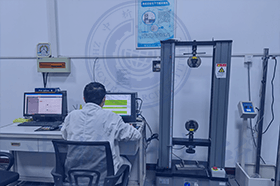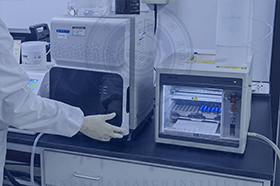檢測項目(部分)
氧含量
一氧化碳含量
二氧化碳含量
其他氟碳化合物含量
蒸氣壓
乙烷、乙烯、丙烷、丙烯、異丁烷、正丁烷、反-2-丁烯、1-丁烯、異丁烯、順-2-丁烯、異戊烷、正戊烷、1,3丁二烯
銅片腐蝕
氮含量
八氟環(huán)丁烷中水分含量
總硫含量
檢測樣品(部分)
八氟環(huán)丁烷
工業(yè)丁烷
檢測標(biāo)準(zhǔn)(部分)
本標(biāo)準(zhǔn)適用于由正丁醇和鹽酸為原料反應(yīng)生產(chǎn)的氯代正丁烷。
分子式:C4H9Cl
相對分子質(zhì)量:92.57(按2016年國際相對原子質(zhì)量)
本標(biāo)準(zhǔn)適用于使用異丁烷制冷劑生產(chǎn)家用和類似用途制冷器具的生產(chǎn)線設(shè)計、制造、改造;日常生產(chǎn)、管理。其他烷類制冷劑可參照使用本標(biāo)準(zhǔn)。
These test methods are used to determine trace amounts of volatile chlorides in butane-butene mixtures. Such information is valuable in cases where chloride is deleterious in the use of this product; also chloride contributes to corrosion problems in processing units in instances where further processing of this material is involved.
1.1 These test methods cover the determination of the total volatile organic chlorides in concentrations from 10 to 100 ppm in butane-butene mixtures. The amperometric finish is not directly applicable in the presence of other substances that combine with silver ion or oxidize chloride ion in dilute acid solution. Bromides sulfides ammonia tobacco smoke and more than 25 181g of hydrogen peroxide in the test solution interfere in the spectrophotometric procedure.
1.2 Dissolved sodium chloride is not quantitatively determined using these test methods.
1.3 The values stated in SI units are to be regarded as the standard.
1.4 This standard does not purport to address all of the safety concerns if any associated with its use. It is the responsibility of the user of this standard to establish appropriate safety and health practices and determine the applicability of regulatory limitations prior to use. Specific warning statements are given in Sections 5 8 11 14 19 and Annex A1.
The BWC as determined by this test method is a measure of the ability of an activated carbon to adsorb and desorb butane from dry air under specified conditions. It is useful for quality control and evaluation of granular activated carbons that are used in applications where the adsorption of butane and desorption with dry air are of interest. The BWC can also provide a relative measure of the effectiveness of the tested activated carbons on other adsorbates.
The butane activity and retentivity can also be determined under the conditions of the test. The butane activity is an indication of the micropore volume of the activated carbon sample. The butane retentivity is an indication of the pore structure of the activated carbon sample.
1.1 This test method covers the determination of the butane working capacity (BWC) of new granular activated carbon. The BWC is defined as the difference between the butane adsorbed at saturation and the butane retained per unit volume of carbon after a specified purge. The test method also produces a butane activity value that is defined as the total amount of butane adsorbed on the carbon sample and is expressed as a mass of butane per unit weight or volume of carbon.
1.2 The values stated in SI units are to be regarded as standard. No other units of measurement are included in this standard.
1.3 This standard does not purport to address all of the safety concerns if any associated with its use. It is the responsibility of the user of this standard to establish appropriate safety and health practices and determine the applicability of regulatory limitations prior to use. For a specific hazard statement see 7.1.
The BWC as determined by this test method is a measure of the ability of an activated carbon to adsorb and desorb butane from dry air under specified conditions. It is useful for quality control and evaluation of granular activated carbons that are used in applications where the adsorption of butane and desorption with dry air are of interest. The BWC can also provide a relative measure of the effectiveness of the tested activated carbons on other adsorbates.
The butane activity and retentivity can also be determined under the conditions of the test. The butane activity is an indication of the micropore volume of the activated carbon sample. The butane retentivity is an indication of the pore structure of the activated carbon sample.
1.1 This test method covers the determination of the butane working capacity (BWC) of new granular activated carbon. The BWC is defined as the difference between the butane adsorbed at saturation and the butane retained per unit volume of carbon after a specified purge. The test method also produces a butane activity value that is defined as the total amount of butane adsorbed on the carbon sample and is expressed as a mass of butane per unit weight or volume of carbon.
1.2 This standard does not purport to address all of the safety problems if any associated with its use. It is the responsibility of the user of this standard to establish appropriate safety and health practices and determine the applicability of regulatory limitations prior to use. For a specific hazard statement see 7.1.
The butane activity as determined by this test method is a measure of the ability of an activated carbon to adsorb butane from dry air under specified conditions. It is useful for the quality control and evaluation of granular activated carbons. The butane activity is an indication of the micropore volume of the activated carbon sample. This activity number does not necessarily provide an absolute or relative measure of the effectiveness of the tested carbon for other adsorbates or at other conditions of operation.
The butane activity test can be used as a non-ozone depleting substitute for the carbon tetrachloride activity test in Test Method D 3467
Note 18212;This test has not been designed for use with powdered activated carbon but it has been used successfully when the flow rate or time are adjusted or the sample volume is decreased to keep the pressure drop at an acceptable value.

FIG. 1 Butane Versus Carbon Tetrachloride Correlation
1.1 This test method covers determination of the activation level of activated carbon. Butane activity (BA) is defined herein as the ratio (in percent) of the mass of butane adsorbed by an activated carbon sample to the mass of the sample when the carbon is saturated with butane under the conditions listed in this test method.
1.2 The values stated in SI units are to be regarded as the standard. The values given in parentheses are for information only.
1.3 This standard does not purport to address all of the safety concerns
if any
associated with its use. It is the responsibility of the user of this standard to establish appropriate safety and health practices and determine the applicability of regulatory limitations prior to use.
1.1 The thermophysical property tables for normal butane are for use in the calculation of the pressure-volume-temperature (PVT) thermodynamic and transport properties of normal butane for process design and operations. Two tables provide properties at the conditions of liquid-vapor equilibrium (saturation properties) one for liquid and one for vapor at temperatures between 135 K and the critical point 425.13 K. A third table provides properties at selected T p points for the equilibrium phase at temperatures between 140 K and 570 K at pressures to 20 MPa. The tables were developed using the National Institute of Standards and Technology Standard Reference Database product REFPROP version 10.0.
1.2 The values stated in SI units are to be regarded as standard. No other units of measurement are included in this standard.
1.3 This international standard was developed in accordance with internationally recognized principles on standardization established in the Decision on Principles for the Development of International Standards Guides and Recommendations issued by the World Trade Organization Technical Barriers to Trade (TBT) Committee.
1.1 The thermophysical property tables for isobutane are for use in the calculation of the pressure-volume-temperature (PVT) thermodynamic and transport properties of isobutane for process design and operations. Tables are provided for gaseous and liquid isobutane at temperatures between 120 and 570 K at pressures to 20 MPa. One table provides properties at the conditions of liquid-vapor equilibrium (saturation properties). The other table provides properties at selected T p points for the equilibrium phase at those conditions. The tables were developed by the National Institute of Standards and Technology from a Standard Reference Database product REFPROP version 8.0.
1.2 The values stated in SI units are to be regarded as standard. No other units of measurement are included in this standard.
1.1 The thermophysical property tables for normal butane are for use in the calculation of the pressure-volume-temperature (PVT) thermodynamic and transport properties of normal butane for process design and operations. Tables are provided for gaseous and liquid normal butane at temperatures between 136 and 560 K at pressures to 20 MPa. One table provides properties at the conditions of liquid-vapor equilibrium (saturation properties). The other table provides properties at selected T p points for the equilibrium phase at those conditions. The tables were developed by the National Institute of Standards and Technology from a Standard Reference Database product REFPROP version 8.0.
1.2 The values stated in SI units are to be regarded as standard. No other units of measurement are included in this standard.
These test methods are used to determine trace amounts of volatile chlorides in butane-butene mixtures. Such information is valuable in cases where chloride is deleterious in the use of this product; also chloride contributes to corrosion problems in processing units in instances where further processing of this material is involved.
1.1 These test methods cover the determination of the total volatile organic chlorides in concentrations from 10 to 100 ppm in butane-butene mixtures. The amperometric finish is not directly applicable in the presence of other substances that combine with silver ion or oxidize chloride ion in dilute acid solution. Bromides sulfides ammonia tobacco smoke and more than 25 x03BC;g of hydrogen peroxide in the test solution interfere in the spectrophotometric procedure.
1.2 Dissolved sodium chloride is not quantitatively determined using these test methods.
1.3 The values stated in SI units are to be regarded as standard. No other units of measurement are included in this standard.
1.4 This standard does not purport to address all of the safety concerns if any associated with its use. It is the responsibility of the user of this standard to establish appropriate safety and health practices and determine the applicability of regulatory limitations prior to use. Specific warning statements are given in Sections 5 8 11 14 19 and Annex A1.

檢測資質(zhì)(部分)










檢測優(yōu)勢
檢測實驗室(部分)





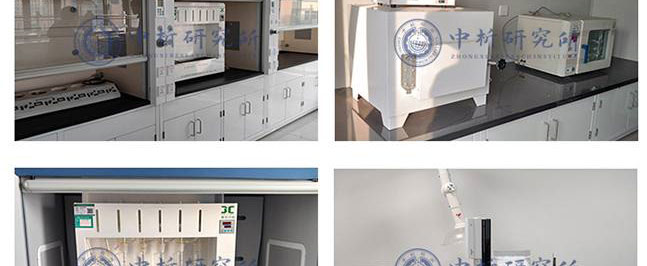
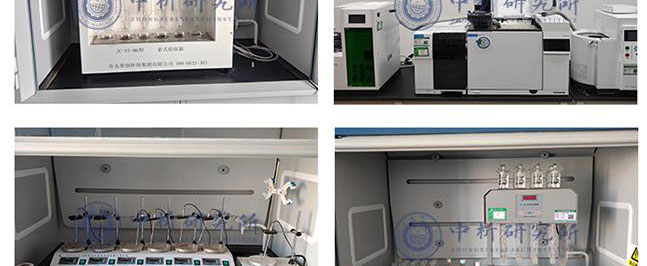
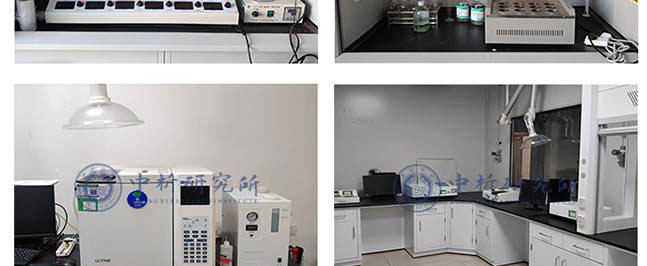
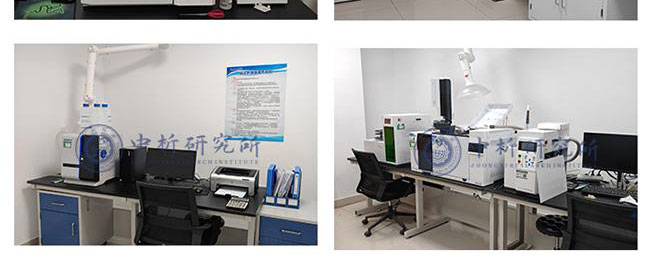
合作客戶(部分)





檢測報告作用
1、可以幫助生產(chǎn)商識別產(chǎn)品的潛在問題或缺陷,并及時改進(jìn)生產(chǎn)工藝,保障產(chǎn)品的品質(zhì)和安全性。
2、可以為生產(chǎn)商提供科學(xué)的數(shù)據(jù),證明其產(chǎn)品符合國際、國家和地區(qū)相關(guān)標(biāo)準(zhǔn)和規(guī)定,從而增強產(chǎn)品的市場競爭力。
3、可以評估產(chǎn)品的質(zhì)量和安全性,確保產(chǎn)品能夠達(dá)到預(yù)期效果,同時減少潛在的健康和安全風(fēng)險。
4、可以幫助生產(chǎn)商構(gòu)建品牌形象,提高品牌信譽度,并促進(jìn)產(chǎn)品的銷售和市場推廣。
5、可以確定性能和特性以及元素,例如力學(xué)性能、化學(xué)性質(zhì)、物理性能、熱學(xué)性能等,從而為產(chǎn)品設(shè)計、制造和使用提供參考。
6、可以評估產(chǎn)品是否含有有毒有害成分,以及是否符合環(huán)保要求,從而保障產(chǎn)品的安全性。
檢測流程
1、中析研究所接受客戶委托,為客戶提供檢測服務(wù)
2、客戶可選擇寄送樣品或由我們的工程師進(jìn)行采樣,以確保樣品的準(zhǔn)確性和可靠性。
3、我們的工程師會對樣品進(jìn)行初步評估,并提供報價,以便客戶了解檢測成本。
4、雙方將就檢測項目進(jìn)行詳細(xì)溝通,并簽署保密協(xié)議,以保證客戶信息的保密性。在此基礎(chǔ)上,我們將進(jìn)行測試試驗.
5、在檢測過程中,我們將與客戶進(jìn)行密切溝通,以便隨時調(diào)整測試方案,確保測試進(jìn)度。
6、試驗測試通常在7-15個工作日內(nèi)完成,具體時間根據(jù)樣品的類型和數(shù)量而定。
7、出具檢測樣品報告,以便客戶了解測試結(jié)果和檢測數(shù)據(jù),為客戶提供有力的支持和幫助。
以上為丁烷檢測的檢測內(nèi)容,如需更多內(nèi)容以及服務(wù)請聯(lián)系在線工程師。






